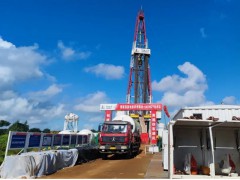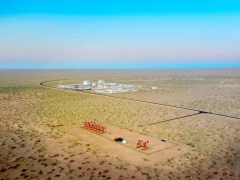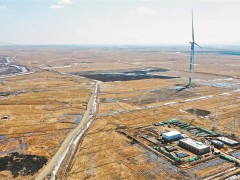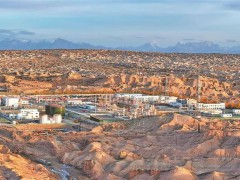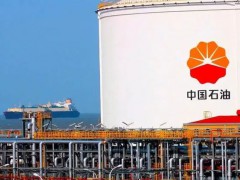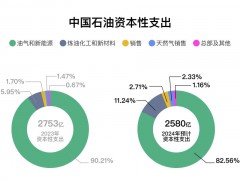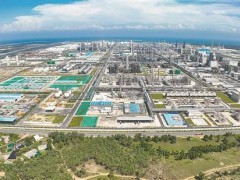据今日油价4月8日报道,美国能源信息署(EIA)本周在其短期能源展望中称,今年全球经济走强将加速石油需求增长幅度将加快至每日550万桶,并将需求增长预期上调20万桶/天。
EIA预计,2021年全球经济增长预计为6.2%,比3月份的预测数据高出0.4个百分点。
2022年,全球石油需求将再增加370万桶/天,并回到疫情爆发前的水平。EIA的最新估计显示,到2022年,全球平均石油消费量将达到1.013亿桶/天。
2021年全球石油需求增长幅度提高了20万桶/天,而2022年的增长幅度预期较3月的预估下调了10万桶/天,3月份EIA预计石油需求增长幅度为530万桶/天,2022年为380万桶/天。
EIA对全球石油需求增长的预期略比欧佩克保守。美国政府最新向上修正的数据显示,今年的需求增长仍低于欧佩克的估计。欧佩克在3月份的月度石油市场报告中预计,今年的需求增长幅度为每日590万桶。欧佩克4月的月度报告将于4月13日公布。在3月份的报告中,欧佩克提高了2021年下半年的需求预期。尽管如此,由于欧洲主要经济体的长期封锁和美国的高失业率减缓了经济复苏,该机构下调了对2021年上半年石油需求的预期。
据报道,上周欧佩克联合技术委员会(JTC)将2021年的需求增幅预期下调至560万桶/天。然而,欧佩克+表示,今年晚些时候需求信心强劲反弹,并决定在7月前恢复约200万桶/天的减产,同时,沙特将取消100万桶/天的额外减产。
目前,石油市场和所有预测机构面临的关键问题是,下半年石油需求强劲增长的预期能否实现。当然,关键是疫情情况下,主要经济体在经济强劲增长的情况下取消封锁限制的能力。美国和中国的迹象表明经济增长强劲。许多国家的宽松货币政策也将继续支持经济活动,并支持石油需求增长。疫苗接种计划的进展将使更多的人开始旅行,包括乘坐国际航线,这不仅会刺激经济,也会刺激受疫情严重打击的航空燃料需求。
尽管复苏步伐仍存在不确定性,但多数分析师仍预计2021年下半年经济将出现强劲增长,这反过来又将提振石油需求。EIA预计,到2021年下半年,全球石油市场将“变得更加平衡”。
EIA表示,2021年下半年,全球石油供应的增长预计将有助于实现市场的基本平衡。然而,这一预测在很大程度上取决于欧佩克+未来的生产决定、美国致密油生产对油价的反应能力、以及石油需求增长的速度等等。
EIA估计,美国页岩油产量将在2021年第二季度至第四季度之间增加,以应对油价上涨。然而,与3月份的预测相比,2021年和2022年美国原油平均产量分别减少了约10万桶/天和16万桶/天。
最新预测显示,美国今年的平均石油日产量将为1104万桶,低于上月估计的1110万桶。根据4月份的估计,2022年的平均产量将为1190万桶/天,低于3月份预计的1200万桶/天。然而,由于预期油价上涨,EIA已于3月已将其对2022年石油日产量的预测上调至多50万桶/天。
EIA称,今年,由于预期WTI原油价格将维持在每桶55美元上方,美国原油产量将从第二季的平均1090万桶/天增加至第四季的近1140万桶/天。明年第四季,美国平均石油产量将高于1200万桶/天,至1218万桶/天。
尽管美国主要石油生产商的支出受到严格控制,但油价上涨将使页岩行业重回增长轨道,即使这一增长速度比疫情爆发前要慢。
王佳晶 摘译自 今日油价
原文如下:
EIA Increasingly Optimistic about Oil Demand Growth
A stronger global economy this year is set to accelerate oil demand growth to 5.5 million barrels per day (bpd), the U.S. Energy Information Administration (EIA) said in its Short-Term Energy Outlook for April this week, raising its demand growth forecast by 200,000 bpd.
Global economic growth is now expected at 6.2 percent in 2021, up by 0.4 percentage point from the March STEO, as per estimates from Oxford Economics which the EIA uses for prediction modeling.
Next year, global oil demand is set to rise by another 3.7 million bpd over 2021 and exceed the pre-pandemic levels from 2019. World consumption of petroleum is set to average 101.3 million bpd in 2022, EIA's latest estimates show.
The 2021 global oil demand growth was lifted by 200,000 bpd, while the 2022 growth estimate was revised down by 100,000 bpd from the March forecasts, which had pegged demand growth at 5.3 million bpd this year and 3.8 million bpd in 2022.
The EIA has slightly more conservative estimates about global oil demand growth than OPEC. The latest upward revision from the American administration puts this year's demand growth still below OPEC's estimate, which had it at 5.9 million bpd in its March Monthly Oil Market Report. OPEC's April monthly report is due out next Tuesday, April 13. In the March report, OPEC raised its outlook for the second half of 2021. Still, it revised down its estimates for oil demand for the first half of 2021 due to extended lockdowns in major economies in Europe and high unemployment rates in the United States slowing the recovery.
Last week, the OPEC+ Joint Technical Committee (JTC) reportedly revised down the demand growth estimate to 5.6 million bpd for 2021.
However, OPEC+ signaled confidence in demand rebounding strongly later this year by deciding to return around 2 million bpd by July by easing the production cuts by over 1 million and Saudi Arabia gradually reversing its extra 1-million-bpd cut.
The key question for the oil market and all forecasters now is whether expectations of robust oil demand growth in the second half of the year will materialize. The key wild card, of course, is the pandemic and the ability of major economies to exit lockdowns and other restrictions with strong economic growth. Signs from the United States and China point to robust growth. The easy monetary policy in many continues will also support economic activity and, as an extension, oil demand growth. Progress in vaccination programs would allow more people to start traveling more, including on international airline routes, which is set to spur not only economies but also jet fuel demand which has been badly hit by the pandemic.
Despite lingering uncertainties over the pace of the recovery, most analysts continue to expect strong economic growth over the second half of 2021, which in turn is set to boost oil demand.
The EIA expects global oil markets "to become much more balanced" in the second half of 2021.
"Forecast increases in global oil supply will contribute to a mostly balanced market during the second half of 2021. However, the forecast depends heavily on future production decisions by OPEC+, the responsiveness of U.S. tight oil production to oil prices, and the pace of oil demand growth, among other factors," the EIA said in the April STEO.
U.S. shale will respond to higher oil prices by increasing production between the second quarter and the fourth quarter of 2021, EIA's estimates show. However, the 2021 and 2022 averages for total U.S. crude oil production were reduced by around 100,000 bpd and 160,000 bpd, respectively, from the March forecasts.
American oil production is set to average 11.04 million bpd this year, the latest projections show, down from the 11.1 million bpd estimate from last month. Production in 2022 will average 11.9 million bpd, as per the April estimate, down from 12.0 million bpd expected in March. Last month, however, the EIA had already raised its 2022 estimate by as much as 500,000 bpd because of higher expected oil prices.
This year, thanks to expectations that WTI Crude prices will stay above $55 per barrel, U.S. oil production is set to increase from an average 10.9 million bpd in the second quarter to nearly 11.4 million bpd by the fourth quarter, the EIA said. In the fourth quarter next year, U.S. oil production is expected to average above 12 million bpd—at 12.18 million bpd.
Despite the spending discipline of major U.S. producers, higher oil prices are set to put the shale patch back on a growth trajectory, even if this growth is slower than what we saw before the pandemic.
免责声明:本网转载自其它媒体的文章,目的在于弘扬石化精神,传递更多石化信息,并不代表本网赞同其观点和对其真实性负责,在此我们谨向原作者和原媒体致以敬意。如果您认为本站文章侵犯了您的版权,请与我们联系,我们将第一时间删除。



